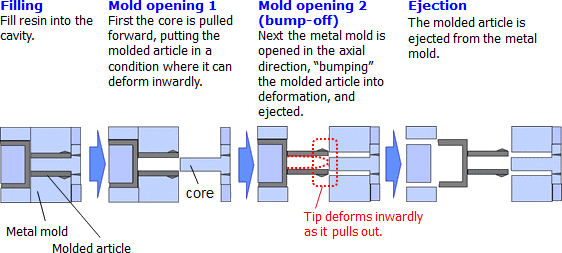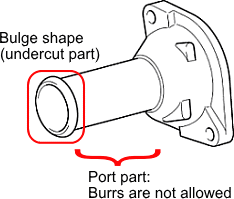In the past, automotive cooling system parts (cooling water control valves, inlet and outlet pipes, etc.) had mainly used PA 6,6 and aromatic polyamide. However, since polyamide is susceptible to strength degradation from hydrolysis and dimensional changes from water absorption, designers find it to be a very challenging material to use.
In recent years though, there has been a major spike in the use of PPS in cooling system parts. In addition to being highly heat-resistant with a continuous service temperature range of 200 to 240℃, PPS (polyphenylene sulfide) has chemical resistance comparable to fluororesins as no organic solvents can dissolve it at temperatures of 200℃ and below, and undergoes virtually no dimensional changes from hydrolysis and water absorption the way polyamide does. This long-term reliability makes PPS very attractive for use in product design. An example of cooling system parts can be seen in Figure 1.
Normally the connected parts of cooling system parts and rubber hoses are in a bulged formation, so an undercut shape is put into the design of metal molds. If ejection from the metal mold is in a sliding structure, burrs appear in the parting line (lip of the metal mold). However, burrs in these connected parts (port parts) are not generally allowed due to concerns about air leakage and damage to rubber hoses. For that reason deburring is done for molded articles, or polyamide-related materials can already employ molding with
bump-offs (molding with bump-offs will be explained later). On the other hand, PPS has previously had virtually no molding with bump-offs due to the fragility of the material itself. Generally deburring is being done, which results in higher costs.
Here we will check the bump-off capability of PPS, as we also introduce some grades of DURAFIDE® PPS that can be used for bump-off molding. |



